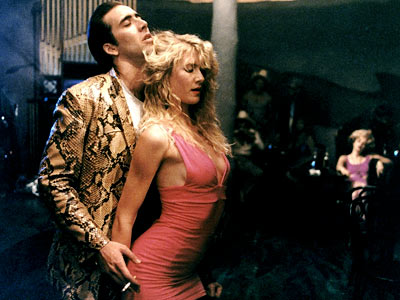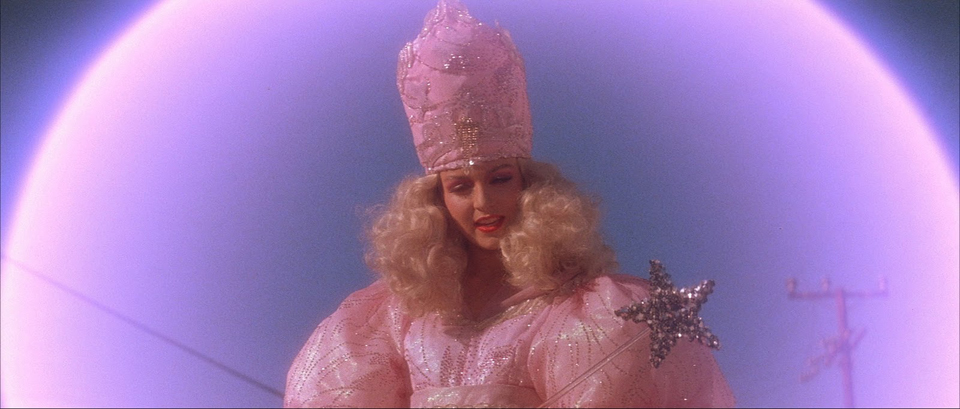 ERASERHEAD (1977); Dir. David Lynch; Starring Jack Nance, Charlotte Stewart, Allen Joseph, Jeanne Bates, Judith Roberts and Laurel Near; Tuesday, March 3 @ 7:00 p.m.; Landmark Midtown Art Cinema; Tickets $11; Trailer here.
ERASERHEAD (1977); Dir. David Lynch; Starring Jack Nance, Charlotte Stewart, Allen Joseph, Jeanne Bates, Judith Roberts and Laurel Near; Tuesday, March 3 @ 7:00 p.m.; Landmark Midtown Art Cinema; Tickets $11; Trailer here.
By Aleck Bennett
Contributing Writer
Landmark Midtown Art Cinema continues its “Midtown Cinema Classics” series with ERASERHEAD, the debut feature from one of this country’s most iconoclastic and distinctive filmmakers, David Lynch. Though made with an almost non-existent budget and shot over the course of five years, it quickly became one of the defining films of the “Midnight Movie” circuit and established Lynch as a singular artist with a visual strength and innovative storytelling style that must be reckoned with.
First, a summary: The Man in the Planet pushes a lever and things go into motion. Grey, desolate cityscapes. Harsh concrète pulses of industrial noise interspersed with the jaunty organ music of Fats Waller. Flickering lights in the hallway. Henry Spencer, a man with a questionable hairstyle. A family dinner with a bleeding, miniature roast chicken. “They’re new!” A revelation. “They’re still not sure it is a baby!” Something that looks like a goat fetus swaddled in bandages. The Lady in the Radiator. “In Heaven, everything is fine.” Crying. Oh, the crying. The Beautiful Girl Across the Hall. Visions. We have a title. Scissors. Confrontation. Explosions. An embrace. And despite the Man in the Planet’s attempts, those levers will not go back. No way to slow down.
There is no effective way to critically assess a movie like ERASERHEAD. It just exists, monolithic. Even discussing the making of the movie is a faulty way to approach the film. It’s too mundane. Too workaday. Is it interesting that Lynch filmed it while on an AFI scholarship and used their campus as filming locations? That it took over five years to complete and that he shot it around his schedule as a newspaper delivery boy? That star Jack Nance’s then-wife, assistant director Catherine “The Log Lady” Coulson helped fund it by donating her entire salary as a waitress? That nobody will speak of the nature or construction of the baby prop? Perhaps. But none of that is nearly as interesting as the movie itself.
 You can try to analyze it and its symbols, but as David Lynch has always been such a closed book when it comes to discussing his own work, that approach depends entirely on what you bring to the table. Is it a horror movie about the terror a parent faces when an unwanted child is brought into the world? Sure! Why not? It’s an easy read of the text. It’s pretty much exactly what you’d say if you were to attempt to summarize the plot in a linear fashion. But try to tie that to a theory that this reflected Lynch’s mindset at the time, and that’s all on you. Lynch isn’t talking, and he’s never going to tell you that you’re right. For all you know, he thought the movie was high comedy. From on-set reports, that’s precisely what he thought about the Dennis Hopper/Isabella Rossellini scenes in BLUE VELVET, and those are freaking harrowing. No, the only way to approach the film on any interpretive level is to take the postmodern stance that the “meaning” of any work of art is dependent entirely on the viewer. And for what it’s worth, Lynch is completely on board with that. You come to it with the baggage you bring, and you walk away from it eyeing your baggage suspiciously.
You can try to analyze it and its symbols, but as David Lynch has always been such a closed book when it comes to discussing his own work, that approach depends entirely on what you bring to the table. Is it a horror movie about the terror a parent faces when an unwanted child is brought into the world? Sure! Why not? It’s an easy read of the text. It’s pretty much exactly what you’d say if you were to attempt to summarize the plot in a linear fashion. But try to tie that to a theory that this reflected Lynch’s mindset at the time, and that’s all on you. Lynch isn’t talking, and he’s never going to tell you that you’re right. For all you know, he thought the movie was high comedy. From on-set reports, that’s precisely what he thought about the Dennis Hopper/Isabella Rossellini scenes in BLUE VELVET, and those are freaking harrowing. No, the only way to approach the film on any interpretive level is to take the postmodern stance that the “meaning” of any work of art is dependent entirely on the viewer. And for what it’s worth, Lynch is completely on board with that. You come to it with the baggage you bring, and you walk away from it eyeing your baggage suspiciously.
Universally speaking, and without getting into personal interpretation, the only thing I can do is insist that you undertake this experience without hesitation, and try to relate to you the film’s ugly beauty. The production design is incredible, and Lynch establishes early on that he is expert at bringing on board cinematographers who can translate his inner visions to celluloid. ERASERHEAD is photographed beautifully. What it captures is often bleak, horrifying and miserable, but depicted with incredible detail and economy. Though the film presents incredibly unpleasant themes and sets its sights on incredibly unpleasant visuals, it does so with such a striking aesthetic impact that you cannot help but appreciate the care, passion and technical precision and accomplishment behind every frame. Lynch, trained as a painter, knows how to work effectively within a frame and does so with a remarkable style and uniform visual sense.
 What’s more striking, though, is how this single work has come to define David Lynch as a filmmaker. Even more than his many early short films, this is the lynchpin (and may the Man in the Planet strike me dead for making that pun) for all of his subsequent works. The unnerving sense of “is this supposed to be funny?” bubbling up from the depths of the darkest sequences. Trademark visual motifs (figures emerging from shadows, the unreliability of electric light sources), storytelling elements (the blurring of dream and reality, odd chanteuses appearing at crucial moments to perform for us), visual composition (alternating black-and-white set design, long establishing shots, seemingly random inserts) and sound design (ever-present ambient noise, strangely anachronistic musical score) all find their wellspring here. Even in casting, Lynch’s oeuvre is tied together by this film, in which he first cast his most frequently-used actor, the late Jack Nance as Henry Spencer. Nance’s distinctive presence and oddball style made him a perfect choice for many subsequent cult films, and Lynch continued to use him in nearly all of his subsequent features (save for THE ELEPHANT MAN) until Jack Nance’s death in 1996.
What’s more striking, though, is how this single work has come to define David Lynch as a filmmaker. Even more than his many early short films, this is the lynchpin (and may the Man in the Planet strike me dead for making that pun) for all of his subsequent works. The unnerving sense of “is this supposed to be funny?” bubbling up from the depths of the darkest sequences. Trademark visual motifs (figures emerging from shadows, the unreliability of electric light sources), storytelling elements (the blurring of dream and reality, odd chanteuses appearing at crucial moments to perform for us), visual composition (alternating black-and-white set design, long establishing shots, seemingly random inserts) and sound design (ever-present ambient noise, strangely anachronistic musical score) all find their wellspring here. Even in casting, Lynch’s oeuvre is tied together by this film, in which he first cast his most frequently-used actor, the late Jack Nance as Henry Spencer. Nance’s distinctive presence and oddball style made him a perfect choice for many subsequent cult films, and Lynch continued to use him in nearly all of his subsequent features (save for THE ELEPHANT MAN) until Jack Nance’s death in 1996.
Frank Zappa coined the notions of “conceptual continuity” and the “Project/Object,” in which he posited that all of his work—every album, song, interview, etc.—was all part of the same Big Work of Art that he was eternally designing as he went along. In a way, this is true of Lynch’s work as well. You could spend days going back and forth about the concepts of identity in his films and how MULHOLLAND DR. is the feminine flip side to the male-dominated diabolism of LOST HIGHWAY, and how all of that relates to the shifting and blurring definition of “self” in INLAND EMPIRE. You could follow the threads of adultery and its repercussions that pop up with regularity throughout his work. You could focus on the almost religious reverence he consistently devotes to the physically aberrant. And you could easily use any of those examinations to tie all of his work together as one big Project/Object. But you’d be hard pressed to do so without coming to the conclusion that it all comes together perfectly in one spot and flows out from that source: ERASERHEAD.
Or maybe not. It’s kinda up to you.
Aleck Bennett is a writer, blogger, pug warden, pop culture enthusiast, raconteur and bon vivant from the greater Atlanta area. Visit his blog at doctorsardonicus.wordpress.com




